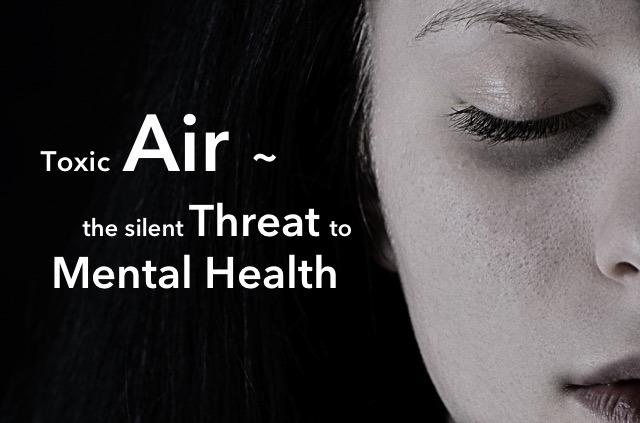BY SUNDIP R. DOSHI
Mental health issues today surround us like the air we breathe. I am pretty sure you or someone you know has experienced this very sad disorder – disrupting lives in unimaginable ways. But what does mental health have to do with the air we breathe?
When you think of air pollution or exposure to toxic air, you think of human respiratory related issues – asthma, COPD, breathing discomfort, lack of energy, etc. Interestingly, researchers for sometime now have also correlated toxic air and obesity, diabetes and Alzheimer disease. But impacting mental health?
AIR QUALITY & MENTAL HEALTH
News Flash – Mental Health is greatly impacted by the air you breathe! Studies shows that increasing exposure to air pollution may increase the risk of anxiety, depression and other mental health related issues. A recent study by University of Washington researchers found psychological distress and its association with air pollution. The study found that air pollution has been associated with behavior changes – spending less time outside or leading a more sedentary lifestyle – that can be related to psychological distress or social isolation.Yet another study by Yale School of Public Health found that Air Pollution is contributing to higher levels of depression.
Smog in our brains – connection between
air pollution and cognitive abilities
Over the years, researchers have found that high levels of air pollution may damage children’s cognitive abilities, increase adults’ risk of cognitive decline and possibly even contribute to depression. Research from Harvard School of Public Health to Institute for the Developing Mind, Children’s Hospital of Los Angeles, to Boston University’s School of Public Health to Columbia University Mailman School of Public Health indicate a correlation between air quality and brain development. These and other institutions continue to research associations and are making significant progress to identify specific bad actors.
CALL TO ACTION – WHAT CAN YOU DO ABOUT IT?
The typical response to bad air quality or air pollution exposure is – what am I suppose to do? I don’t know what I am breathing. I have to breathe!
Good News – with breakthrough advancements in nanotechnology and nano gas sensors from companies like AerNos, you can detect what’s in the air you breathe. Soon, nano gas sensors are going to be embedded in IoT gadgets everywhere – from HVAC systems, to digital assistants (Amazon Echo, Google Home, Apple HomePod) to smartwatches and wearables, to automobiles and other transportation, etc. Once you know what’s in the air you are breathing, you will be able to take immediate action to reduce exposure. In some cases, purification systems will automatically cleanse your surrounding air.
In the meantime, basic steps can reduce exposure – like taking a step back when pumping gas or standing at a bus stop to opening a window in the house to checking air quality websites before going for a jog to making sure there is good ventilation (and air purification) at your work environment to using products that are non-toxic. Babies and young children are most susceptible as exposure can prevent early brain development resulting in all sorts of health and mental health issues.
Next, we can do our part to reduce personal exposure to toxic air – by making sure we are using products that are safe to using vehicles that reduce air pollution to making sure that industries continue to have a safe work environment and the list goes on and on.
Breathing toxic air is not okay – we take 20,000 breaths a day and every breath matters – we know clean air can reduce respiratory disorders but it may just prevent mental health issues.

